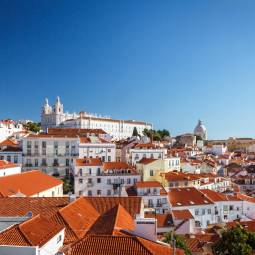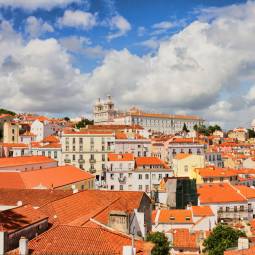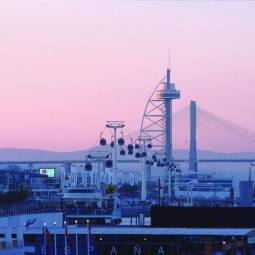Lisbon is one of the most immediately likeable capitals in Europe. Located on the westernmost front of Continental Europe, its mosaic of terracotta roofed buildings cling both majestically and humbly to its seven hills. The Tejo River sweeps past the many character-rich districts which border it, carrying boats big and small and is straddled by two impressive bridges. Some ultra modern skyscrapers rise starkly out of the generally more low rise and higgledy-piggledy layout of buildings, reminding us that Lisboa is indeed a modern city.
The Graça District is one of Lisbon's oldest suburbs, located on top of her highest hill, a few blocks north-east of the Castelo de Sao Jorge and just up the hill from São Vincente de Fora Monastery. The neighbourhood, which centres around the Lago da Graça (the number 28 tram stops here), boasts some of the most spectacular views in Lisbon.
Beautiful, culturally resplendent and immensely significant in Portuguese history, Belém is one of the jewels in Lisbon’s crown. In terms of places to visit and sights to see, this elegant area of the city probably holds the record. Situated alongside the River Tagus, at the point where it meets the Atlantic, Belém is the place from which the caravels sailed on their voyage of discovery and in the 16th century life here revolved around the port.
A stone’s throw away from the capital on the southern side of the Tejo River, the Costa da Caparica is basically a long stretch of sandy, clean beaches to suit all types of beachgoer. Stretching right down to the Cabo Espichel, its sandy expanses are lined with acacia and eucalyptus trees and sienna-coloured cliffs however it is the first five miles to the south of the town of Caparica which are the most well-known.
In 1998 Lisbon was host to Expo '98, this provided the city with an opportunity to regenerate the riverside area to the east of the city.
The site was previously a neglected industrial area comprising of a petrol refinery and old seaplane terminal amongst other things. This providied architects and designers with a blank canvas to on which to proove to the World that Portugal was ready to enter the 21st century as a modern, forward thinking democracy.




